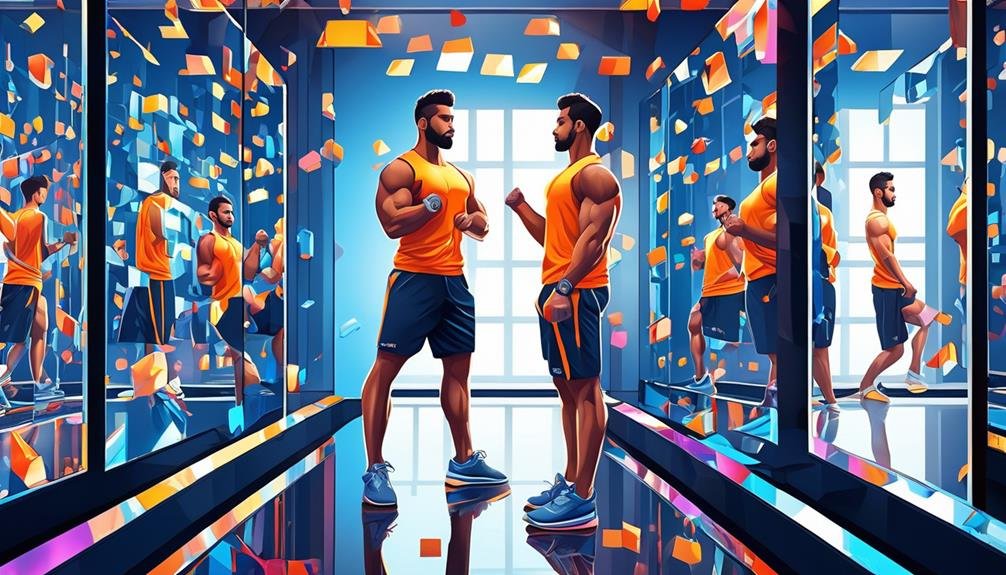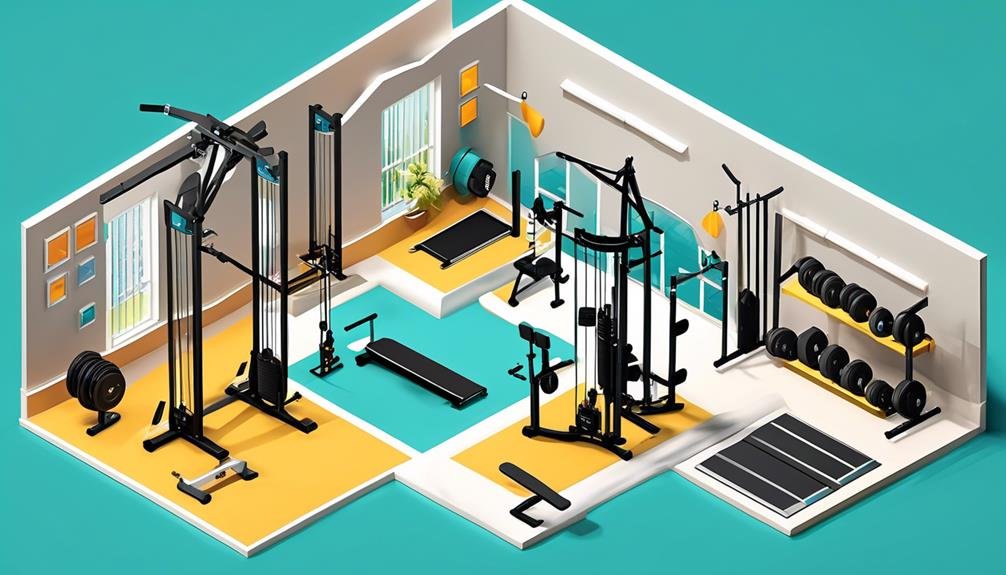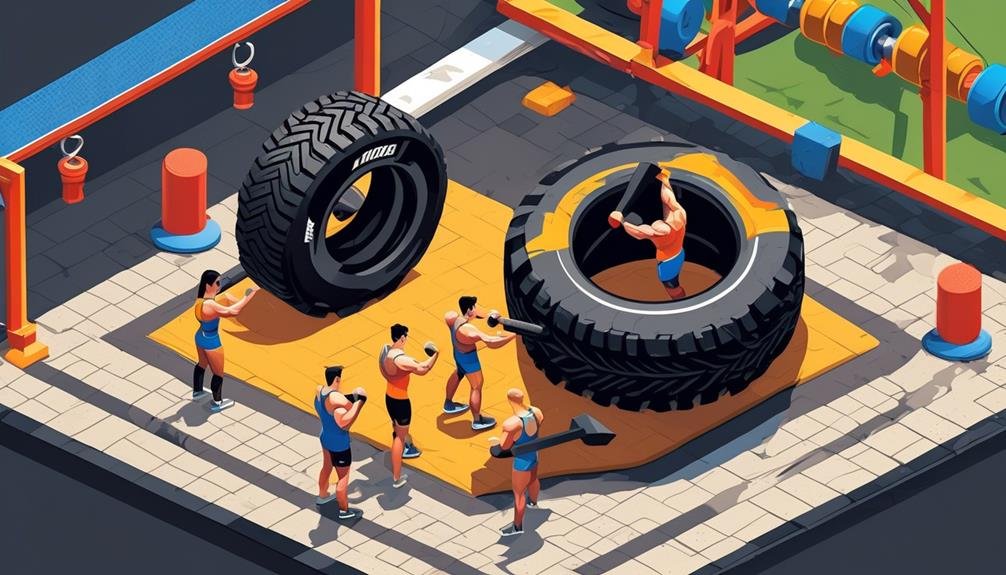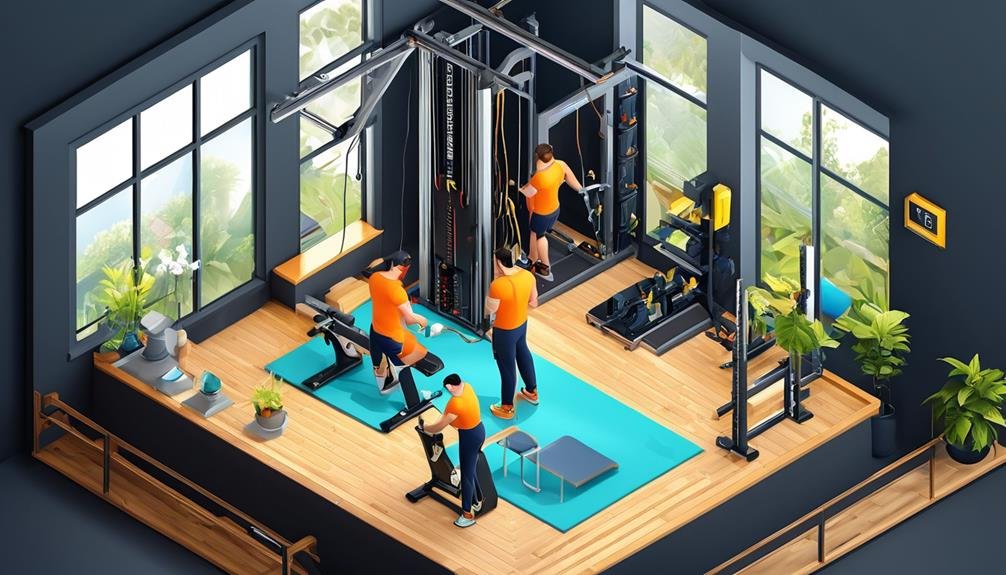Disclaimer: This content is for informational purposes only and does not replace professional medical advice, diagnosis, or treatment. Always consult a qualified healthcare provider before beginning any new exercise program.
Have you ever wondered if installing mirrors on the walls could be beneficial for checking your form during workouts? While it may seem like a simple solution, there are both pros and cons to consider.
In this discussion, we will explore the benefits of using mirrors to improve exercise technique, as well as potential drawbacks to keep in mind. Additionally, we will provide tips for installing mirrors in your workout space and alternative ways to check your form.
Whether you have a large gym or a small home workout area, there are important considerations to take into account. So, should you install mirrors on the walls to check your form? Let's find out.
Key Takeaways
- Mirrors can be beneficial for form checking by allowing observation of form from different angles, identifying imbalances and incorrect postures, enhancing mind-muscle connection, and providing immediate feedback for real-time adjustments.
- However, there are potential drawbacks to relying too heavily on mirrors, such as distractions, limited perspective, distortion of reflections, and increased risk of injury due to dependency on visual feedback.
- Mirrors can improve exercise technique by enabling observation of form in real-time, helping maintain proper alignment and posture, allowing for immediate corrections, and providing visual motivation and accountability.
- If installing mirrors, choose a wall with enough space for a full-length mirror, opt for a mirror that's at least 3 feet wide and 6 feet tall, install them in a well-lit area for maximum visibility, ensure they are securely mounted to prevent accidents, and regularly check for cracks or damage. Alternatively, alternative ways to check form include using a training partner or workout buddy for feedback, recording workouts and analyzing form through video recordings, paying attention to how the body feels during exercises, seeking feedback from fitness experts online, and comparing form to instructional videos.
Benefits of Mirrors for Form Checking
Using mirrors for form checking provides numerous benefits that can greatly improve your workout routine. When you exercise, it's important to maintain proper form to prevent injuries and maximize the effectiveness of your workouts. Mirrors allow you to see yourself from different angles, helping you identify any imbalances or incorrect postures. By observing your movements, you can make necessary adjustments and ensure that you're performing exercises correctly.
One of the main benefits of using mirrors is the ability to monitor your alignment. You can check if your shoulders are in line, your back is straight, and your knees are properly aligned. This helps prevent strain on your joints and muscles, reducing the risk of injury. Additionally, mirrors allow you to visualize your muscles working, which can increase your mind-muscle connection. This enhanced awareness helps you focus on engaging the targeted muscles effectively, leading to better results.
Moreover, mirrors provide immediate feedback. You can instantly see if you're maintaining a proper range of motion, keeping your core engaged, or executing exercises with proper technique. This feedback allows you to correct any mistakes in real-time, making your workouts more efficient and effective.
Potential Drawbacks of Mirrors for Form Checking
While mirrors can be a valuable tool for form checking, it's important to be aware of the potential drawbacks they may present. Here are some things to consider:
- Distraction: Mirrors can be distracting, especially if you're constantly checking yourself out instead of focusing on your form. Remember, the purpose of using mirrors is to improve your technique, not to admire yourself.
- Over-reliance: Relying solely on mirrors for form checking can create a dependency that hinders your progress. It's important to develop body awareness and learn to feel the correct movements without relying solely on visual feedback.
- Limited perspective: Mirrors only provide a front-facing view, limiting your ability to see your form from different angles. This can prevent you from spotting potential imbalances or weaknesses that may be affecting your performance.
- Inaccurate reflection: Mirrors can sometimes distort your reflection, making it difficult to accurately assess your form. This can lead to incorrect adjustments and potentially increase the risk of injury.
How Mirrors Improve Exercise Technique
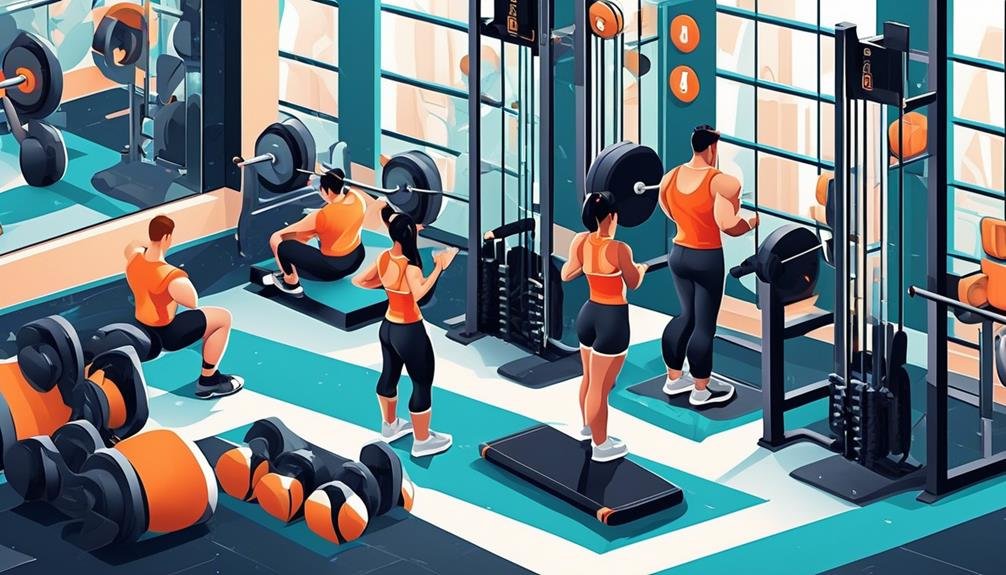
To improve your exercise technique, incorporating mirrors into your training space can provide valuable visual feedback. Mirrors allow you to see your body positioning and movements from different angles, helping you identify any flaws in your form. This visual feedback can be incredibly beneficial in ensuring that you are performing exercises correctly and efficiently.
Here is a table that highlights the specific ways in which mirrors can improve your exercise technique:
| Benefits of Mirrors for Exercise Technique |
|---|
| Allows you to observe your form in real-time |
| Helps you maintain proper alignment and posture |
| Enables you to make immediate corrections |
| Provides visual motivation and accountability |
Tips for Installing Mirrors in Your Workout Space
Consider these tips for installing mirrors in your workout space to enhance your exercise experience and improve your form.
- Placement: Choose a wall that provides enough space for a full-length mirror. Position it so that it reflects your entire body during your workouts. This will allow you to see your form from different angles, helping you to make adjustments and maintain proper alignment.
- Size: Opt for a mirror that's large enough to give you a clear view of your body. A mirror that's at least 3 feet wide and 6 feet tall will allow you to see yourself from head to toe. This size will ensure that you can easily evaluate your form and make necessary corrections.
- Lighting: Install mirrors in a well-lit area to maximize visibility. Natural light is ideal, but if that's not possible, consider adding additional lighting fixtures. Proper lighting will help you see your body clearly and ensure that you can assess your form accurately.
- Safety: Ensure that the mirrors are securely mounted to the wall to prevent any accidents or injuries. Use appropriate hardware and follow the manufacturer's instructions for installation. Regularly check the mirrors for any cracks or damage and replace them if necessary.
Alternative Ways to Check Your Form
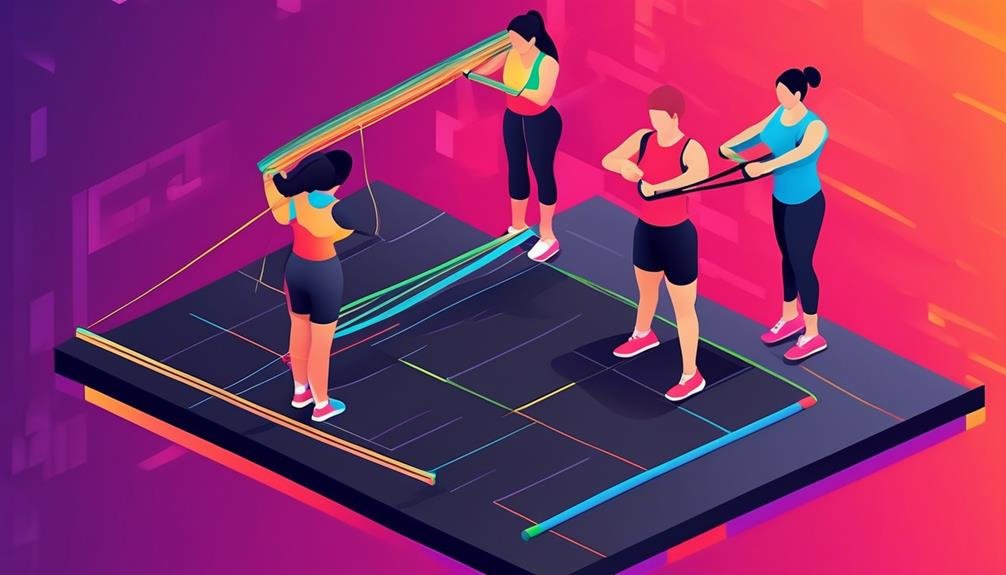
Now let's explore another method to ensure proper form when working out, allowing you to maximize your results and minimize any risk of injury.
While mirrors can be helpful, there are alternative ways to check your form that can be just as effective. One great option is to use a training partner or a workout buddy. Having someone watch your form and provide feedback can be invaluable. They can spot any mistakes or imbalances that you may not notice on your own. Additionally, they can offer suggestions and corrections to help you improve your technique.
Another alternative is to use video recordings of your workouts. With smartphones and cameras readily available, it's easier than ever to record yourself in action. By reviewing these recordings, you can analyze your form and identify any areas that need improvement. You can also compare your form to instructional videos or seek feedback from fitness experts online. This visual feedback can be a powerful tool in refining your technique.
Lastly, paying attention to how your body feels during exercises is crucial. Proper form often feels natural and balanced, while poor form can lead to discomfort or pain. Listen to your body and make adjustments as needed. If something doesn't feel right, take a moment to reassess your form and make the necessary changes.
Incorporating these alternative methods into your workout routine can help you maintain proper form, maximize your gains, and minimize the risk of injury. So, whether you choose to use mirrors, a training partner, video recordings, or simply listen to your body, remember that correct form is key to achieving your fitness goals.
Considerations for Small Workout Spaces
Create an efficient and effective workout space, even with limited room, by considering these key factors:
- Organization: Keep your workout equipment organized and easily accessible. Use storage containers, shelves, or wall-mounted racks to maximize space and prevent clutter. This will make it easier to find and use your equipment efficiently.
- Multipurpose Equipment: Opt for versatile workout equipment that can target multiple muscle groups. This will save space and allow you to perform a variety of exercises without needing multiple machines or weights.
- Compact Equipment: Choose compact and foldable equipment that can be easily stored when not in use. This will allow you to maximize your workout space and create more room for movement during exercises.
- Utilize Vertical Space: Make use of the vertical space in your workout area by installing wall-mounted hooks or racks for hanging equipment such as resistance bands, jump ropes, or yoga mats. This will free up floor space and keep your workout area organized.
Final Thoughts on Using Mirrors for Form Checking
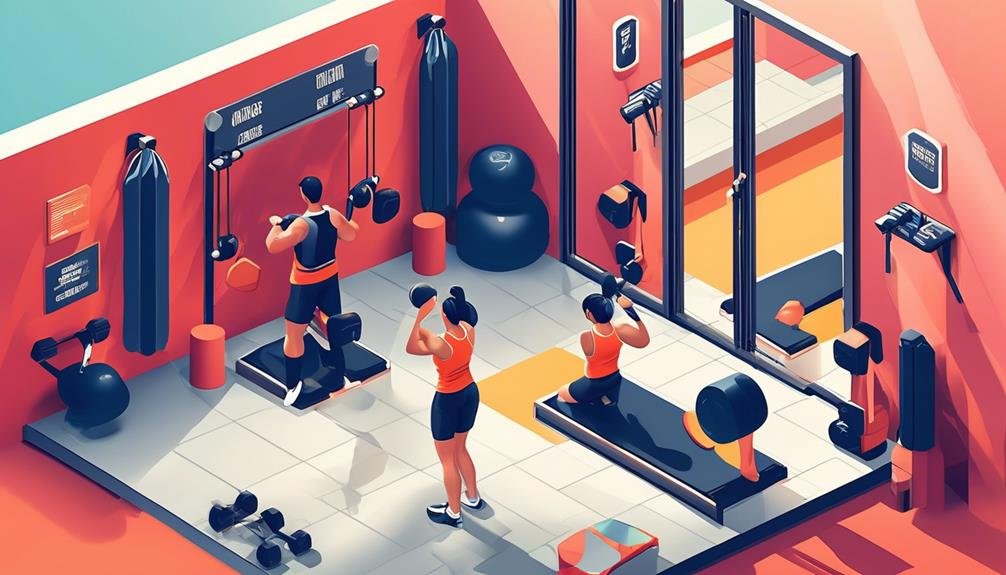
Installing mirrors for form checking can greatly enhance your workout experience and help you perfect your exercise technique. As you wrap up your considerations for using mirrors in your small workout space, it's important to reflect on some final thoughts.
First and foremost, make sure to position the mirrors strategically. Place them in locations where you can easily see yourself from different angles and perspectives. This will allow you to observe your form from all sides and make necessary adjustments. Additionally, consider the lighting in your workout area. Sufficient lighting will help you see your movements clearly and prevent any shadows that might hinder your ability to assess your form accurately.
While mirrors can be a valuable tool, it's important not to solely rely on them. Remember to listen to your body and pay attention to how the exercise feels. Mirrors can provide visual feedback, but they can't detect any discomfort or imbalances you may be experiencing. Trust your instincts and make modifications as needed.
Frequently Asked Questions
How Much Do Mirrors for Form Checking Typically Cost?
Mirrors for form checking vary in price, but they can be a worthwhile investment for improving your workouts. They provide real-time visual feedback, helping you correct your form and prevent injuries.
Can I Use a Regular Mirror or Do I Need a Specific Type for Form Checking?
You can use a regular mirror to check your form, as long as it allows you to see your entire body. Installing mirrors on the walls can be a great way to improve your form and make sure you're doing exercises correctly.
Are There Any Safety Concerns or Risks Associated With Using Mirrors During Workouts?
Using mirrors to check your form during workouts can be beneficial for safety and proper technique. However, make sure the mirrors are securely installed and positioned to avoid any risk of falling or injury.
Will Mirrors Help Me Improve My Performance or Just My Technique?
Mirrors on the walls can be a valuable tool for improving both your performance and technique. They allow you to see your form in real-time, making it easier to make adjustments and ensure proper alignment.
Are There Any Specific Exercises or Workout Routines Where Mirrors Are More Beneficial for Form Checking?
When it comes to checking your form, mirrors can be especially helpful for exercises like squats, deadlifts, and shoulder presses. They allow you to see if you're maintaining proper alignment and technique.
Conclusion
In conclusion, installing mirrors on the walls of your workout space can be a practical and effective way to check your form and improve your exercise technique.
While there are some potential drawbacks to consider, the benefits of using mirrors outweigh them.
Mirrors allow you to visually assess your movements and make necessary adjustments, leading to better results and reduced risk of injury.
So go ahead and invest in some mirrors to take your workouts to the next level!
